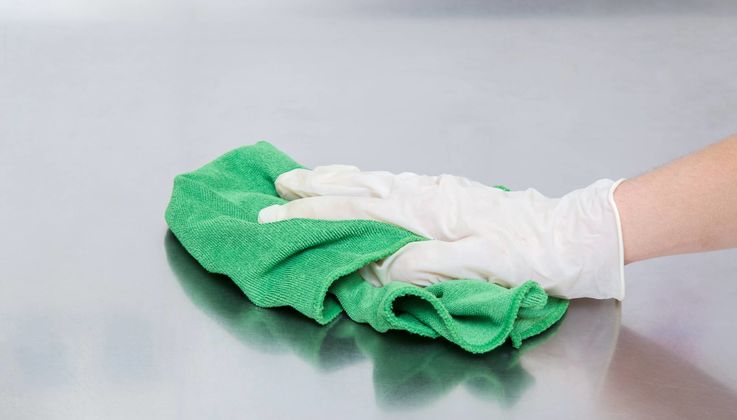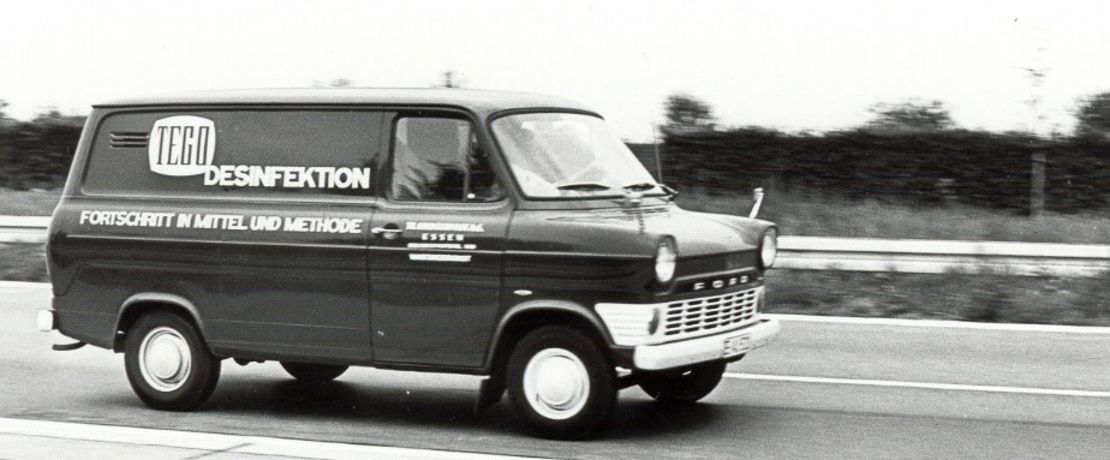
The history of disinfection
Surfactants do more than just clean
Humans have been using soap for millennia, and surfactants have long been more than just simple cleansers. Specialized members of this family of substances now play an important role in disinfecting rooms and surfaces – and research work at Evonik has helped make that possible.
Humanity’s oldest recipe for soap is about 4,500 years old. Immortalized in cuneiform script on a small Sumerian clay tablet, the formulation has stood the test of time: boil one liter of olive oil with a five-and-a-half-fold volume of potash. Potash, which is obtained by burning palm wood, contains the necessary potassium, and the resulting mixture lowers the surface tension of water, allowing the fat-dissolving lye to attack dirt effectively.
Most soap had likely been made at home prior to the 14th and 15th centuries, when artisanal soap making developed – a trade that maintained its leading role in soap production until the dawn of the industrial age.
The begining of surfactant chemistry
Between 1811 and 1823, French chemist Michel Eugène Chevreul successfully characterized the structure of soap – the original surfactant. This provided the basis for understanding the relationship between the molecular structure of soap and its cleansing effects, paving the way for surfactant chemistry. Later on, particularly in the late 19th and early 20th centuries, researchers synthesized countless additional substances with surfactant-like properties.
The number of patents grew dramatically beginning in 1930, as many chemical companies became involved in a mad dash to develop better and better surfactants. Some of these firms invested considerable sums in the newly developing markets.
In the summer of 1942, Th. Goldschmidt AG submitted a patent application for a “body cleanser” – an exceptionally mild soap substitute that went on the market as Tegolan.
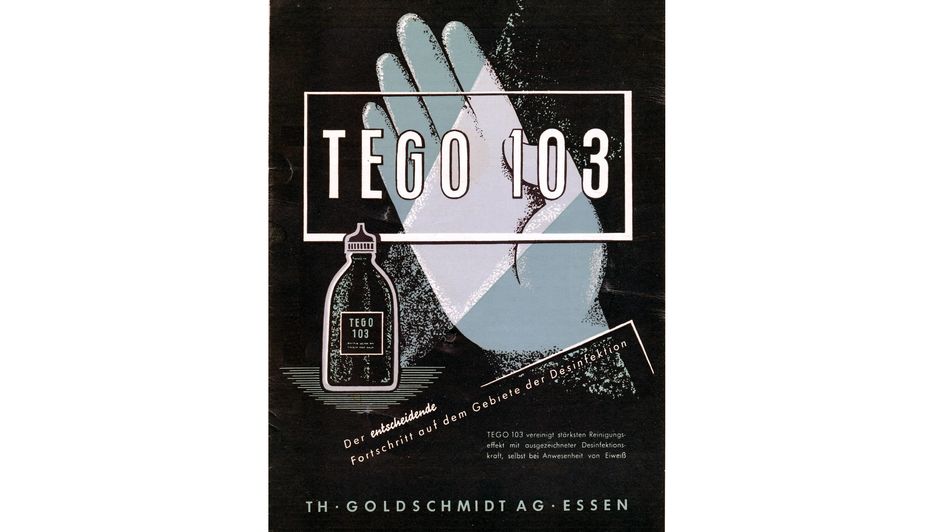
Brochure for TEGO® 103, 1940s.
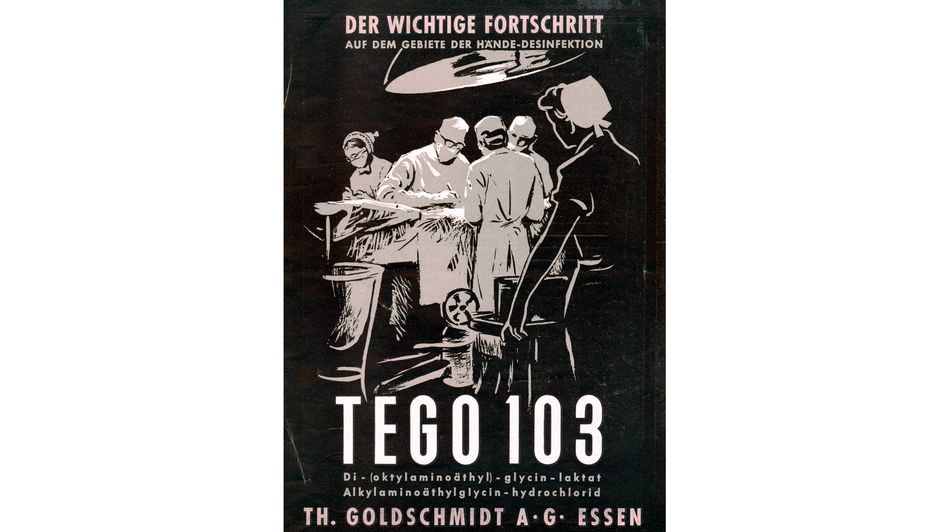
Brochure for TEGO® 103, 1940s.
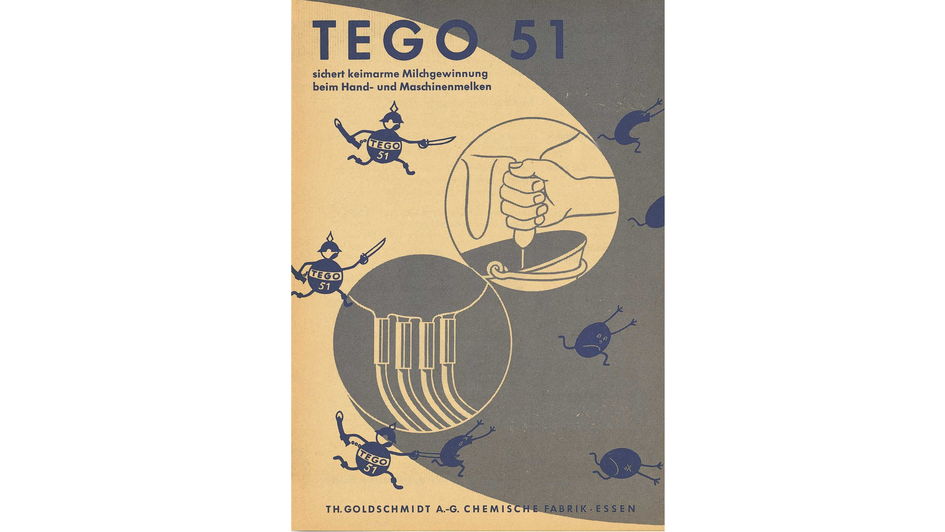
Advertisement for TEGO® 51, 1950s.
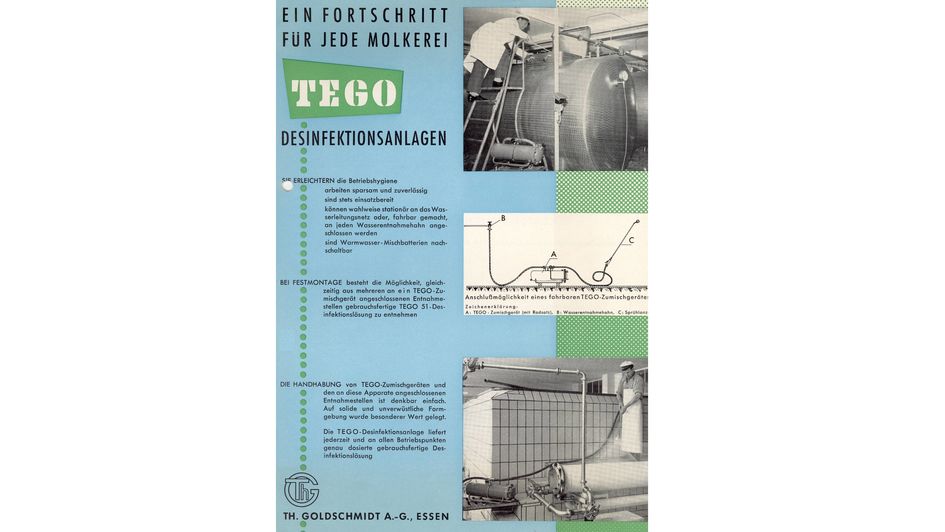
Advertisement for TEGO® disinfection units for creameries, 1950s.
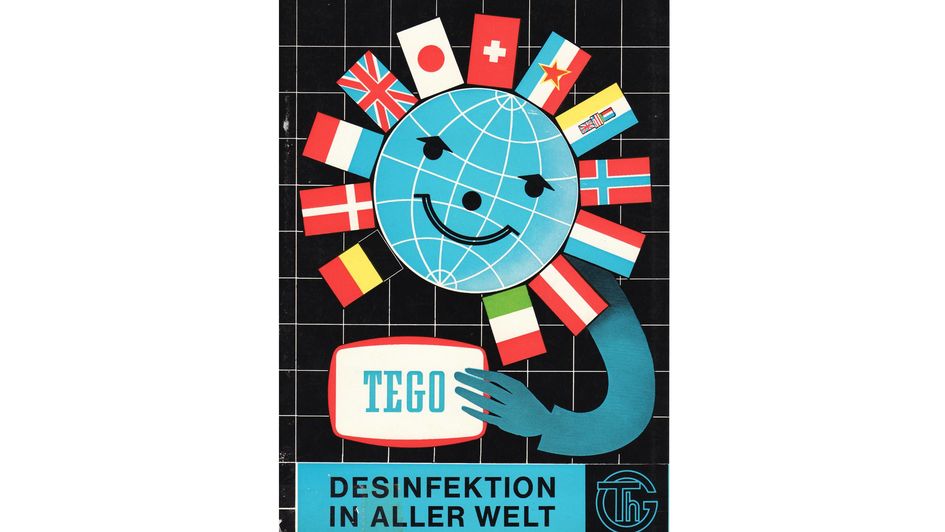
Brochure "TEGO® – Disinfection all around the world", 1960s.
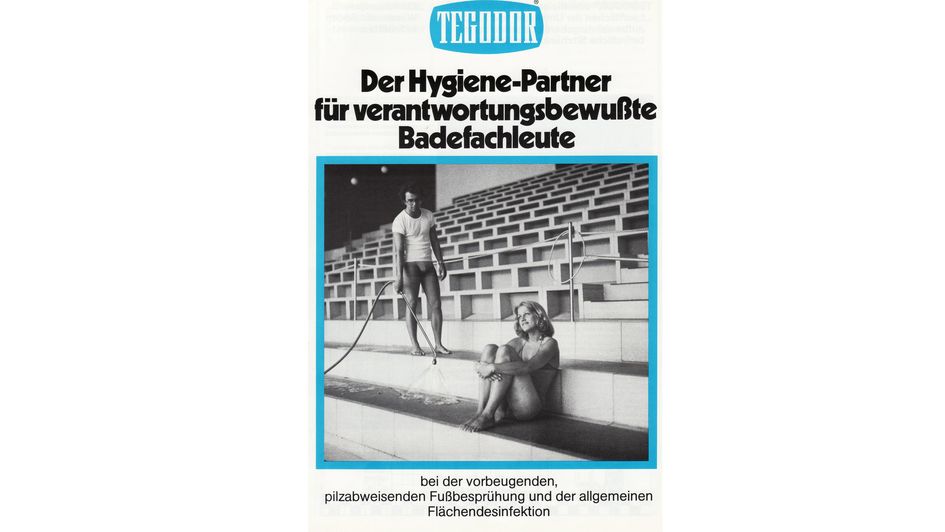
Product information about TEGODOR®, 1970s.
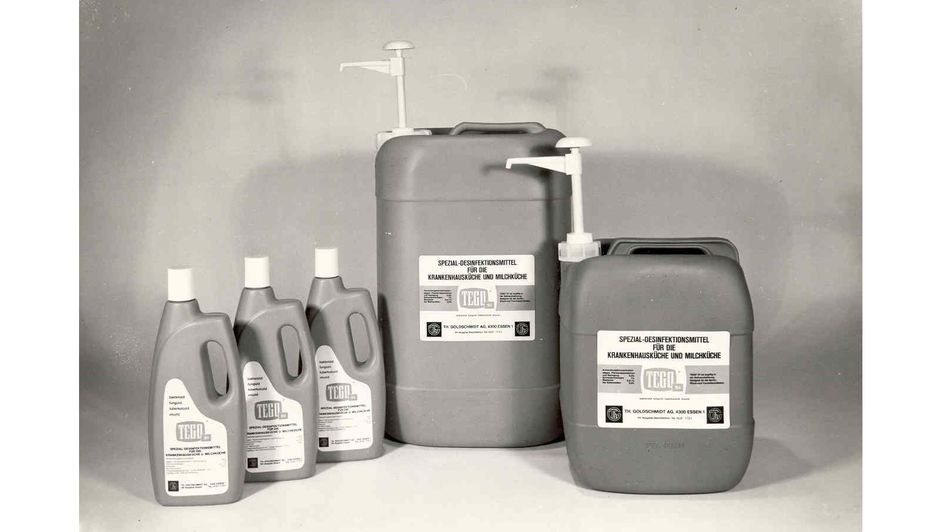
TEGO® disinfectant, 1970s.
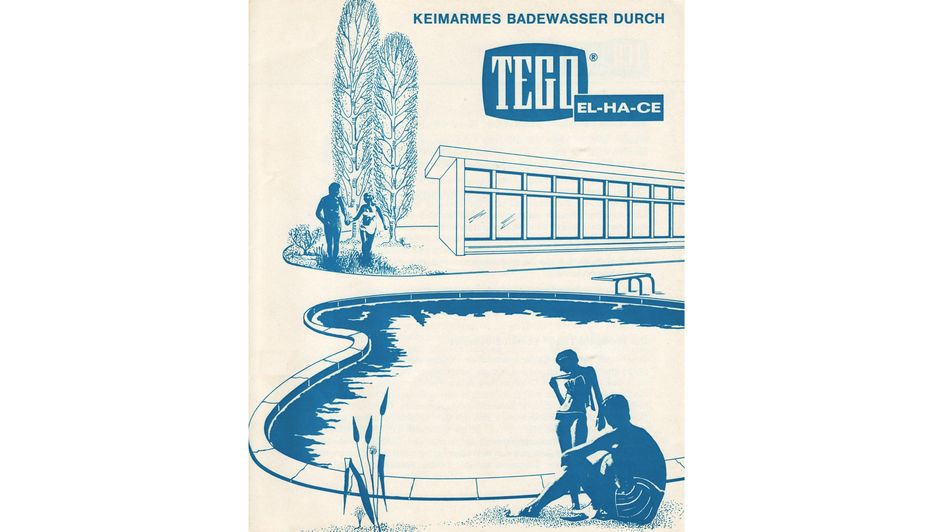
Advertisement for disinfectant TEGO® El-Ha-Ce, 1970s.
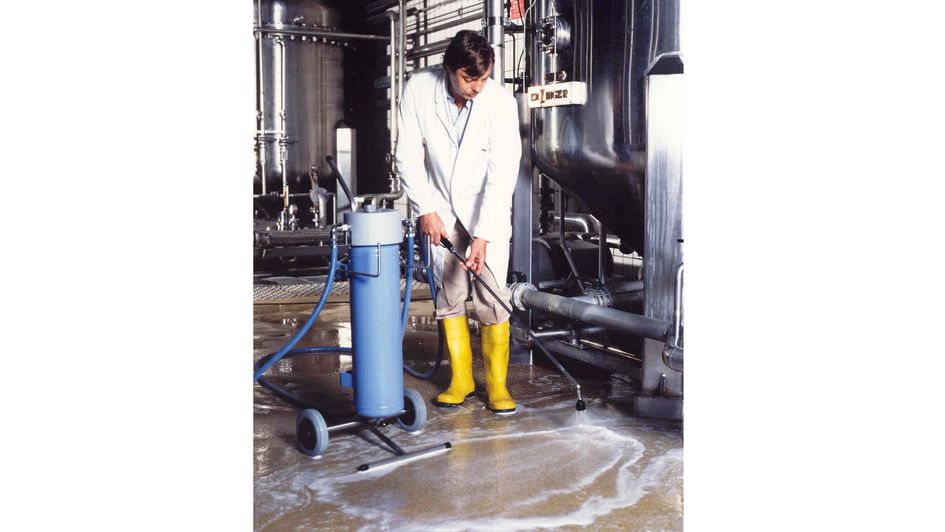
TEGO® Hygiene spraying device, 1980s.
Five years later, the company produced the first disinfectant based on amphoteric surfactants, initially for use in surgical procedures at hospitals. The breakthrough came in 1949/50: once it became clear that TEGO® 103, as the product was called, was also effective against molds, its use in shower rooms expanded tremendously, particularly in the mining industry. The success of the product provided a huge boost to surfactant research at the Goldschmidt company, which, thanks to its growing product portfolio, quickly came to lead Germany’s surface hygiene market in the 1950s. Examples of applications for the products included food container sterilization and disinfection in commercial kitchens, hospitals, and swimming pools.
The business consequently expanded internationally, with mixing equipment, dispensing centers, and a sophisticated on-site service rounding out the portfolio. It was not until the 1980s that increasingly powerful competition began to rein in earnings. Between 1991 and 1995, Goldschmidt gradually sold off its hygiene business, while remaining an important maker of amphoteric surfactants for third-party manufacturers.
Protection from contaminated surfaces
In 2012, Evonik introduced REWOCID® WK 30, an amphoteric surfactant that combined cleaning and disinfecting properties in one product. Because its active ingredient, N-alkyl aminopropyl glycine, is readily compatible with other surfactants and remains effective even in hard water, REWOCID® quickly became an important component of disinfectant cleansers used in household and industrial applications. During the 2019/2020 coronavirus pandemic, for example, hospitals in the Hubei region of China have used this product to protect patients and physicians from contaminated surfaces.


